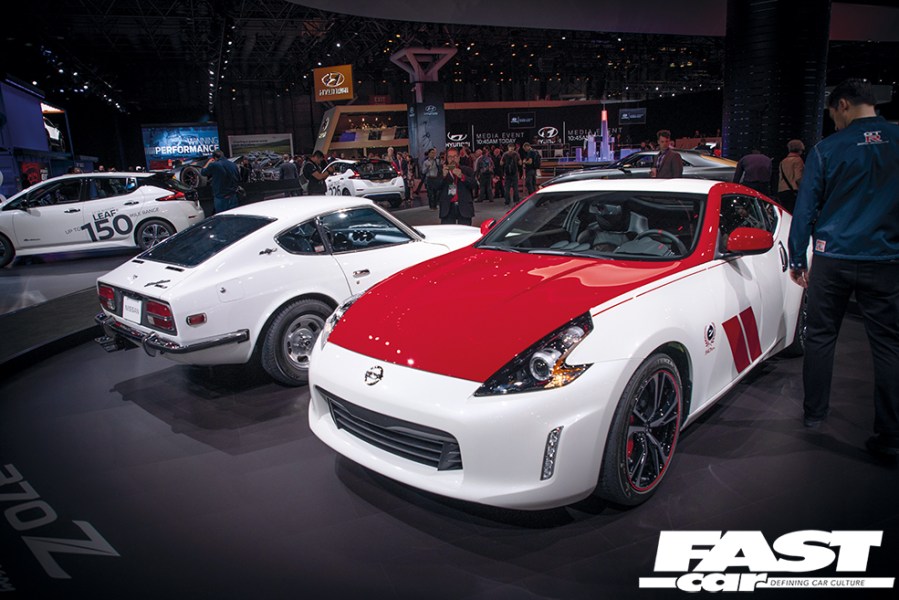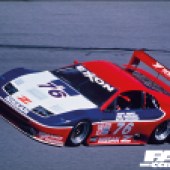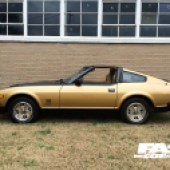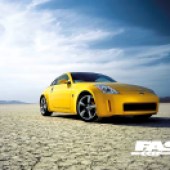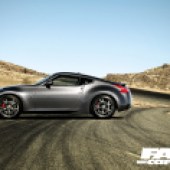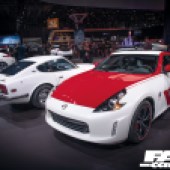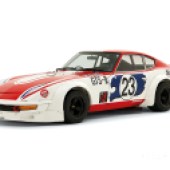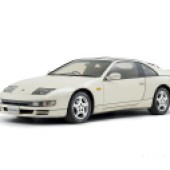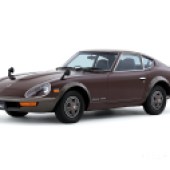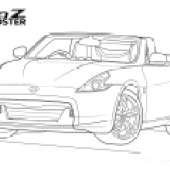We take a look at the history of the Nissan Z-Cars, from the grandfather of today’s Japanese performance cars, the Datsun 240Z, right up to Nissan’s latest, the 400Z.
Words: Nigel Fryatt.
The Datsun 240Z is the great grandfather of today’s Japanese performance cars, and its arrival – amazingly over 50 years ago – heralded a range of successful Nissan Z-cars that did much to establish the marque as a global player, by making reliability cool, especially when attached to power, handling, value for money and panache. And that’s no thanks to George Bernard Shaw… Here’s a history of Nissan Z-cars.
Datsun 240Z
Check out the basic specification of the original Datsun 240Z and you can be forgiven for feeling underwhelmed; a two seater, rear-wheel drive sports car with a six cylinder in-line engine more likely to be found in a lorry, designed especially for chubby Americans, and built to be sold cheap. Add to that the fact that all versions could have been called the Nissan Fairlady Z, thanks to the then company boss being infatuated by the George Bernard Shaw musical My Fair Lady believing therefore that ‘fairlady’ was an English word denoting the height of elegance and glamour, and it would have been hard to predict the Z’s prodigious sales success and enduring attraction.
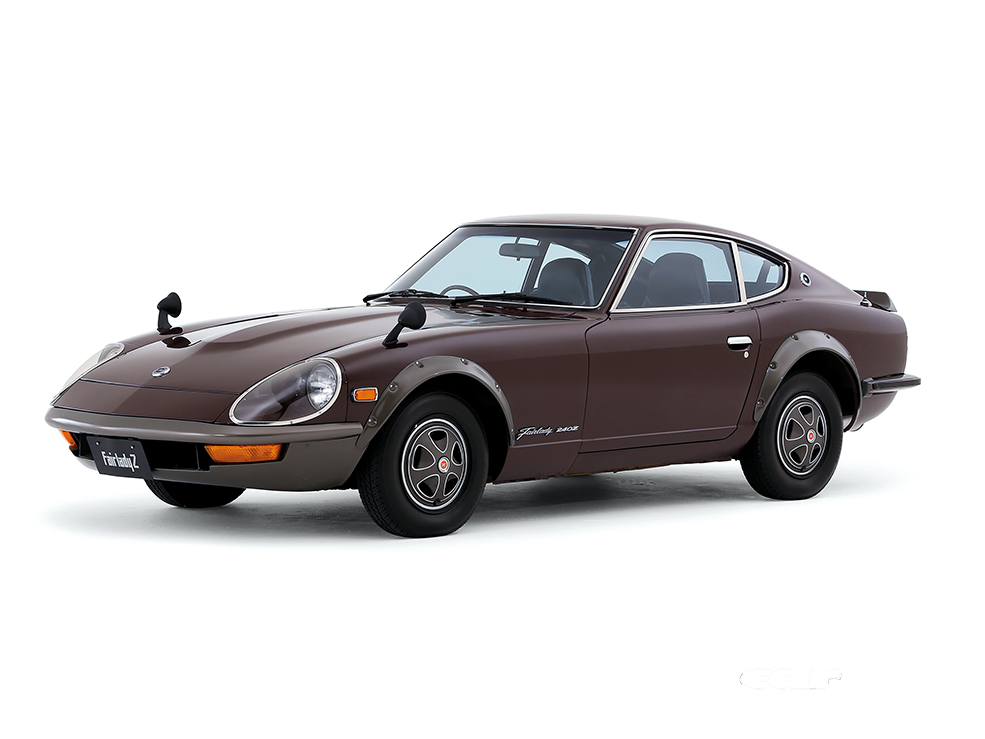
Nissan Z-Cars: Datsun 240Z
You can also add a complex and muddled gestation period that many years later led to US-based German automotive designer Albrecht Goertz taking legal action against the mighty Nissan, to get his part in the 240Z’s story officially recognised, after he had seemingly been erased from the car’s history. Japanese car companies tend to be reluctant to give credit to outsiders, preferring a car’s design to have been a team effort from within the company. Goertz, however, worked as a consultant for the then fledgling Nissan between 1963 and 1965, when they were looking to design a new sports car. He helped produce working prototypes, in association with Yamaha, and it was his influence that suggested the car should be matched directly against the Jaguar E-type and Porsche 911. He also pointed out to the then somewhat naïve Japanese design team that if this car was aimed at America it needed to fit two (possibly well-built) occupants of over 6ft and it needed to do that in comfort, which demanded a significantly bigger interior than was usual for the more compact Japanese physique. The Nissan-Yamaha prototype Goertz worked on was actually shelved in 1965, yet much – including the overall look – was transferred to the new model that arrived in Japan in 1969, launched as the Nissan Fairlady Z.
This new sports car was aimed directly at the US, yet Nissan was nervous that if it failed to be a success it would reflect badly on the company, and so it was decided to use the brand name Datsun on all export models; presumably Western customers would obviously be too daft to know it was built by Nissan. Anecdotal evidence also claims that the President of Nissan US, Yutaka Katayama, stopped the first models that arrived in America from being delivered to dealers until all the ‘Fairlady’ badges were removed and the cars became known simply by the model name, 240Z.
Katayama’s actions were not always well received by the more conservative executives back in Japan and he was accused of having ‘gone native’ and become too American! However, he knew how to sell cars, what the American market wanted and he knew the 240Z was perfect. The relatively simple 2393cc carburetored ohc six cylinder engine developed 150bhp, it handled like a sports car, it was comfortable and roomy (thanks to Goertz), ultra-reliable and cheap as a Big Mac and fries… The US launch price was around $3500, at the time, that was half the price of a Porsche 911. It would accelerate to 60mph in around eight seconds, which was competitive with the Porsche and top out at 120mph, admittedly slightly less than the equivalent Jaguar E-type’s 140 maximum speed, but did we mention the 240Z was very reliable? And cheap.
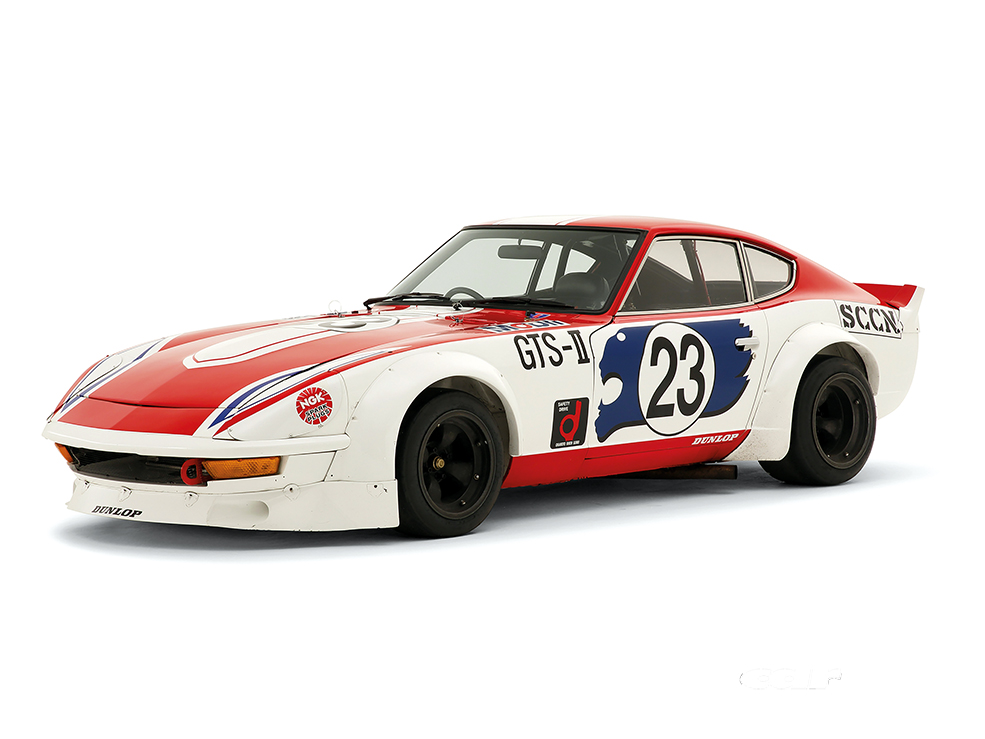
To boost sales, Katayama, who became known in US motoring circles as “Mr K”, put the 240Z on the race track immediately it arrived, where it won the well-respected 1970/71 season SCCA National Championship. After arriving in Europe, the 240Z also went international rallying, won many supporters (especially on British forest stages) due to the tail-happy, mud splattering handling characteristics on the loose, and the 240Z’s toughness and reliability saw it win the highly prestigious East African Safari Rally in 1971, repeating that victory two years later.
When the 240Z came to the end of its production run in 1973, nearly 200,000 had been built, with over 70 per cent of them sold in the US. Yutaka Katayama had proved he knew his market, although he continued to annoy the bosses back in Japan until he was eventually persuaded to take early retirement, only to reappear later in the Z story, since the tale had only just begun…
Bigger, fatter, but better Nissan Z-cars? Datsun 260Z & 280Z
It’s an incontrovertible law that everything in America gets bigger and fatter eventually and that can be said of the 240Z, which from 1974 to 1978 grew to be a 2+2 GT rather than a sprightly two seater. Interestingly when some manufacturers produce a 2+2 coupe from an existing design, they work from the existing overall dimensions and concentrate on refiguring the interior space, Nissan actually increased the wheelbase by nearly a foot, kept the front section as was, and completely redesigned the rear. For the 260 and 280Z that didn’t upset the car’s lines too much, but does perhaps help to explain the rather ungainly looks of later models.
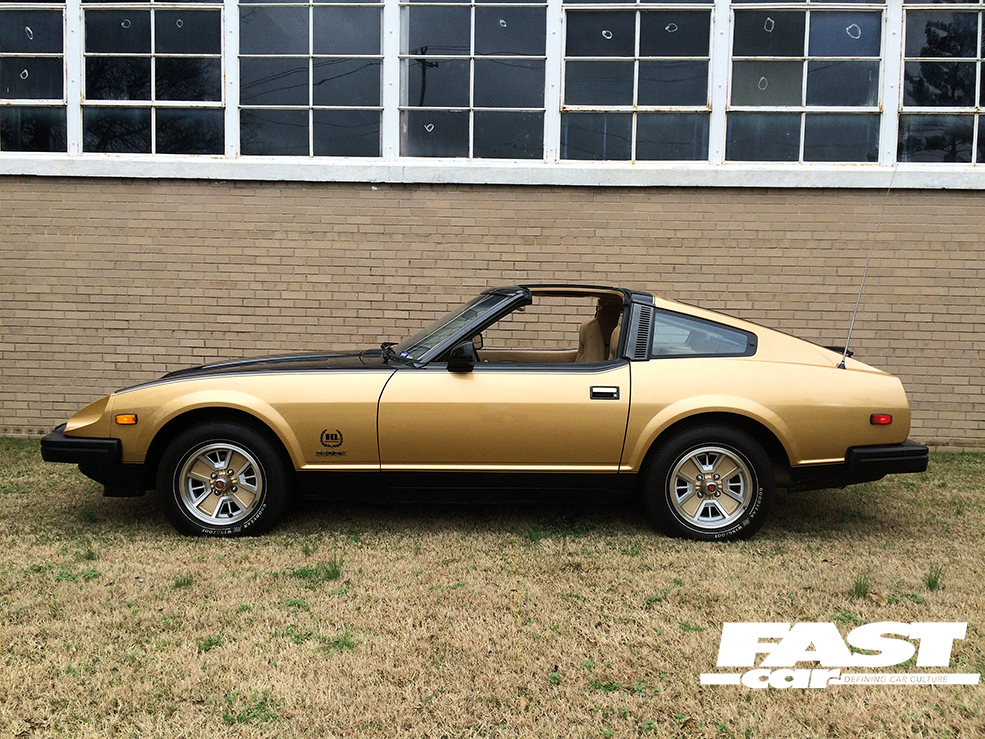
Bigger did mean more weight, and despite engine mods that included Bosch fuel injection available from 1975, the weight and US Emission laws meant that in the States the car was now more GT Tourer, less outright sports car. Nevertheless it still managed to keep its nose in front on the race track. In 1975, a privately entered 260Z became the first Japanese car to race at Le Mans, admittedly not that successfully, but it makes a great quiz question. Actor, and serious racer, Paul Newman took his 280Z to the 1976 SCCA National production class championship and forged a long-term racing career with the Japanese company.
When the 280ZX arrived in 1978, a rather low key launch from Nissan had people asking ‘what’s new?’ Certainly it looked much the same, when in fact it was a new car from the ground up. Now much bulkier than the original 240Z concept, it was more luxurious, quieter and softer riding, all the things demanded by the dominant American market. It came as a two seater and 2+2, then with the ‘T-bar’ roof version. For the 1979 Frankfurt Motor Show we got to see the 280ZX 2+2 TT, which was a T-bar and turbocharged. The turbo version originally was only available as an automatic as Nissan didn’t believe the manual gearbox could cope with all that power – around 180bhp. This 280ZX Turbo model never made it to Britain, such was the demand in the US, but even over there, times were changing with the big Detroit manufacturers swapping the ubiquitous V8s for smaller V6 units. Nissan followed suit, taking the V6 from its ‘Tokyo Taxi’ Cedric saloon; for export markets this was in 3-litre normally aspirated and turbocharged formats.
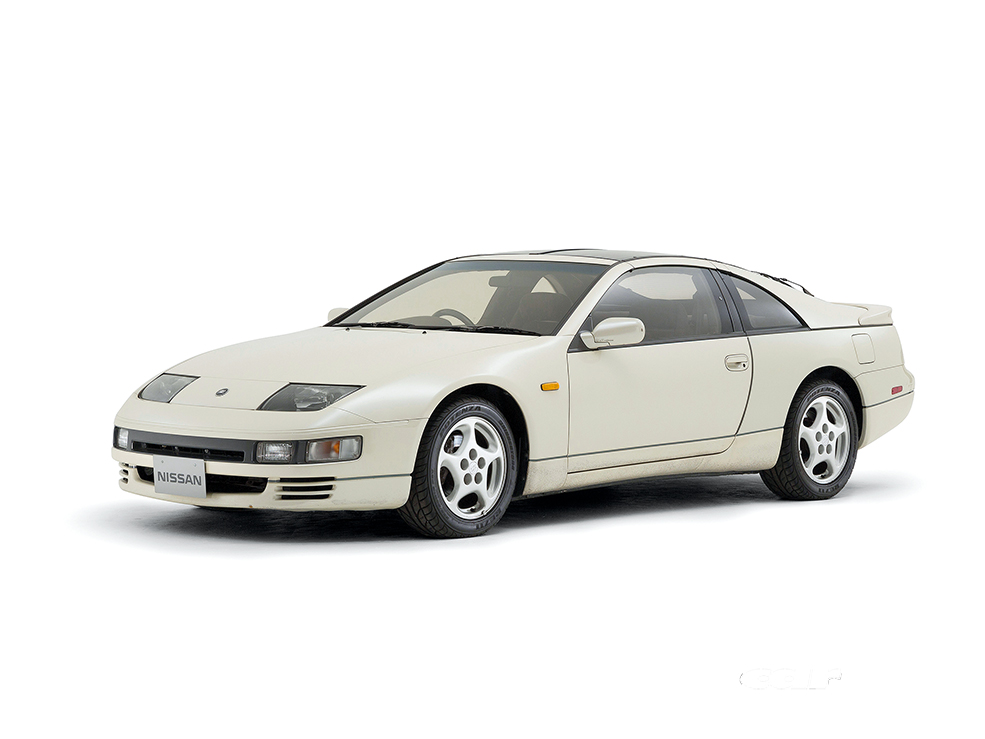
Nissan Z-Cars: Nissan 300ZX
This engine pointed to the future, but everyone accepted that the overall ‘look’ of the latest Z-car had fulfilled its potential and a new model was sorely needed; enter the 300ZX in 1984.
Brave new world for Nissan Z-Cars – Nissan 300ZX, 350Z and 370Z
Now the Eighties were a problem for many; we gained ‘disco’ music, big hair, odd clothes and confused car design. To this author’s eye, the first series 300ZX is a great example of all that was wrong with Eighties’ design; a confusion of straight lines and curves, exacerbated by ghastly, seemingly unnecessary trim, topped off with equally unnecessary but legally demanded impact bumpers. While the looks were questionable for some, it didn’t lack performance. Autocar magazine took a 2+2 UK spec turbo model and managed a 0-60mph in just over seven seconds and a 137mph top speed, which for a weighty car with only 230bhp available, is impressive. The Datsun brand name was dropped at this time and so this became the first of the Nissan Z-cars in all markets (thankfully, the Fairlady moniker stayed just for Japan). It kept selling, so you can’t blame Nissan for plugging along with a design which, while still kept a nod to the original Z car was beginning to look very outdated; but things changed from 1990 when western markets got the all-new 300ZX.
If you compare the profiles of a series one and series two 300ZX, you can see the resemblance, yet everything changed. Everything. The only commonality between the two was the displacement of the engine; still 3-litre, but now DOHC, with variable valve timing. Twin Garrett turbochargers were available, with dual intercoolers and this model could summon up 300bhp, 0-60mph was in the five to six second bracket and it would bust a 155mph top speed. There was even the option of four-wheel steering on the top spec model. What’s more it looked good, if a tad conservative. Available as a two-seater, 2+2 and even a full convertible but, and there’s always a but, it came at a cost. The successful Z-car value-for-money motif could no longer be linked to the new 300ZX. Competition was stronger, SUVs were becoming the ‘must have’ vehicle, which when added to a relatively high price in the main export area of America, saw sales drop and the last 300ZX was imported into the US in the 1996 model year, where it was taken to the Peterson Automotive Museum in Los Angeles.
Despite losing its main market, the 300ZX continued for a couple more years in Japan to achieve close to a decade of sales. You could have been forgiven for thinking, however, that it would be the very last of the Nissan Z-cars.
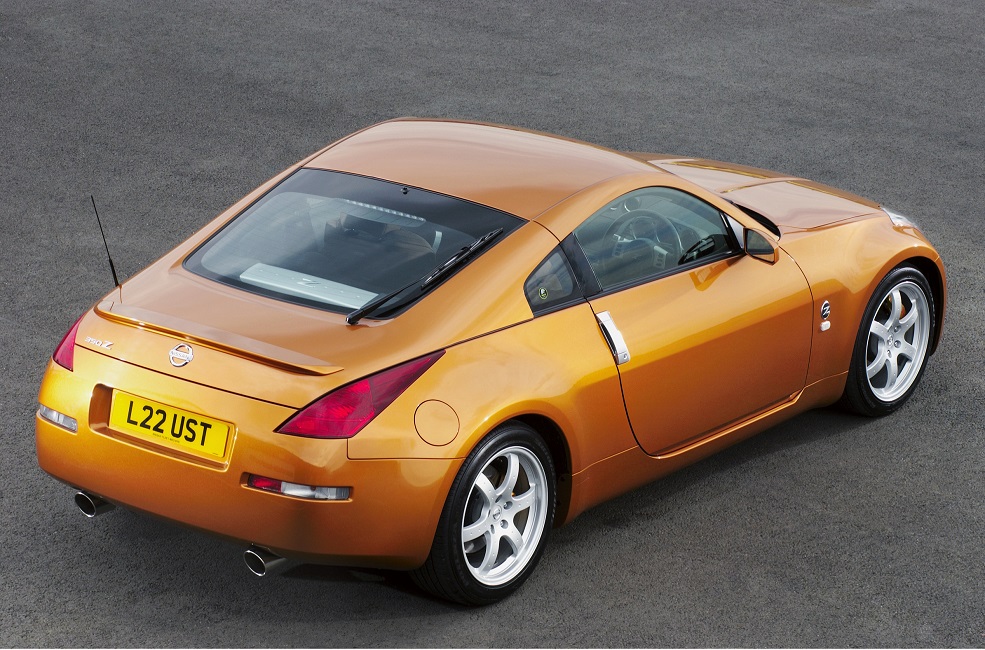
Nissan Z-Cars: Nissan 350Z
Towards the end of the 1990s, Nissan was in financial trouble; sales had fallen, the SUV era hadn’t brought it the necessary riches; in truth, Nissans were boring. Within the company, however, the Z-car was still held with much regard. Nissan started an official classic restoration scheme in the US, buying old 240Zs, restoring them and selling them back to the market. Laudable, but fruitless and certainly not cost effective. But then at the 1999 North American Auto Show, a concept 240Z appeared. In its bright burnt orange colour scheme it had the soul of the original, and it had “Mr K”, former President of Nissan US in its corner, supportive, enthusiastic and influential as ever. The decision to build, however, came from an unlikely source. Renault bought a major shareholding in Nissan, basically saving the company and the man charged with leading this new partnership, Carlos Ghosn, announced that they would be building a new 240Z, and it would be profitable. Ghosn’s achievements with the Renault-Nissan conglomerate are impressive, which makes his more recent extraordinary fall from grace and clandestine ‘escape’ from Japan, where he faces numerous charges brought by Nissan, all the more dramatic. Whatever the charges against him from Nissan may be, he certainly made the decision that kept the Z-car alive and in 2002, we all fell in love with the 350Z.
A squat, rounded and sexy two-seater, the design matched the age. Aimed, in the US, to compete directly with the Porsche Boxster in terms of performance and all-important price, the launch models had the 3.5-litre V6, but there were numerous options including the Nismo (Nissan’s in-house performance and motorsport division had been established in 1984, but for many in Europe, until the 350Z, it was a relatively unknown concern). The car arrived at a perfect time when Japanese performance cars were booming, the modification industry was exploding and the 350Z seemed to cover all the bases. 2005 was celebrated with the 35th Anniversary Edition models, complete with a revised engine management system that allowed, even encouraged drivers to hit the 7000rpm redline. It even became a film star when a modified 350Z took centre stage in the highly successful franchise Fast and Furious: Tokyo Drift, introducing the Z-car format to a completely new generation.
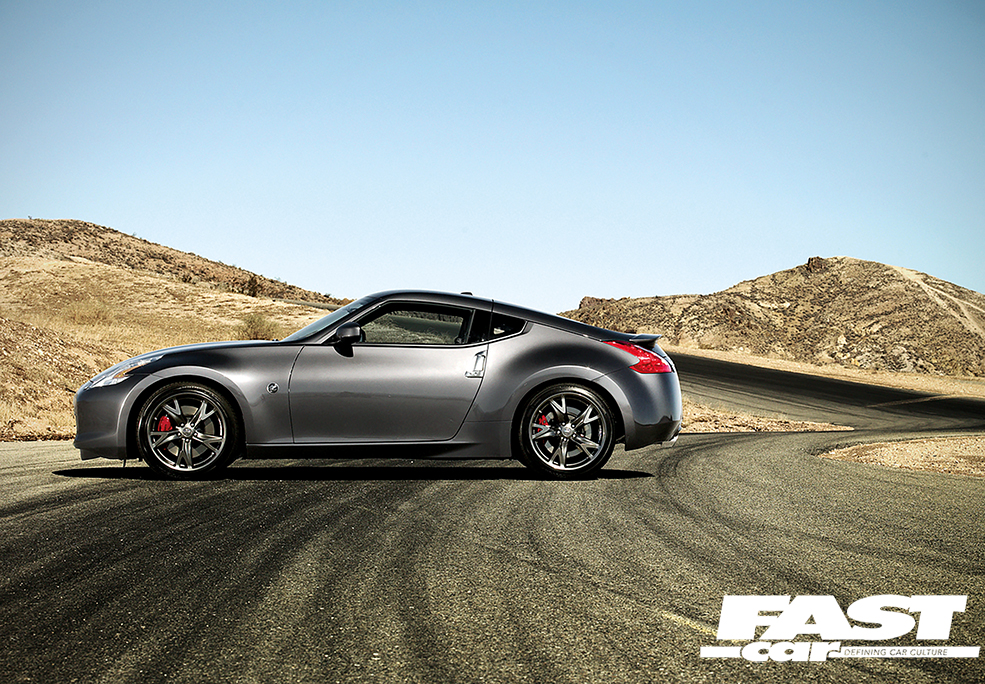
Nissan Z-Cars: Nissan 370Z
The 370Z model arrived for the 2009 model year. Its 3.7-litre engine displacement version was tested by the American Motor Trend magazine where it achieved a 4.7-second 0-60mph time, making it the fastest production Z-car ever built. We now had six-speed manual or seven-speed automatic with paddle shifters. Early in 2020, we were even able to buy a 50th Anniversary edition 370Z, the BRE, a model that paid homage to on one of the original 240Z race teams, Brock Racing Enterprises; a racing heritage that can span five decades is a major achievement, as is the longevity of the 370Z, which has been on sale, with very few significant updates since 2009. Nissan has been reluctant to end production, despite sales having been low for many years. The reason? The Z Proto or 400Z. Sadly, here in the UK, we won’t be getting the upcoming addition to the Nissan Z-Cars family, but we’ve put together a little guide to the upcoming Z model here.
Feature first appeared in Fast Car magazine.

